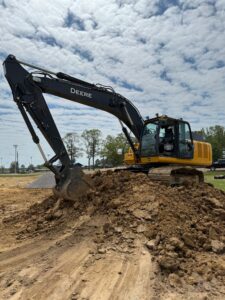Grading, the process of leveling the ground, is a fundamental aspect of any construction project. It may not seem glamorous, but without proper grading, structures would be unstable and water could wreak havoc. In fact, about 90% of structural failures are due to improper site preparation, emphasizing the critical role grading plays in construction.
Grading ensures a stable foundation, essential for any building, road, or infrastructure project. The science behind grading involves understanding soil composition, water flow and the structural requirements of the project. Engineers and contractors must consider these factors to create a site that can support the weight of structures and withstand environmental conditions.
One of the primary reasons for grading is drainage. Properly graded land directs water away from structures, preventing water damage and erosion. According to the American Society of Civil Engineers, about $48 billion is spent annually in the U.S. on repairing damage caused by poor drainage and erosion. This highlights the importance of getting grading right the first time.
Grading is not just about making the ground flat; it often involves creating slopes and contours to guide water flow. For example, roadways are typically crowned, meaning they are higher in the center and slope downwards on the sides. This design helps water run off the surface, reducing the risk of flooding and hydroplaning accidents.
The art of grading involves a combination of traditional skills and modern technology. Heavy machinery such as bulldozers, graders, and excavators are commonly used to move and shape the earth. These machines are often equipped with advanced GPS technology, which allows for precise control over the grading process. GPS systems can guide the equipment to within a fraction of an inch, ensuring the land is leveled exactly to the specifications required. This precision is particularly important for large-scale projects like highways and airports, where even minor deviations can have significant consequences.
An example of advanced grading technology is the use of automated machine control (AMC) systems. These systems use GPS and laser-based instruments to automatically adjust the blade of a grader, ensuring perfect leveling. Studies have shown that AMC can increase grading accuracy by up to 50% and reduce project time by 30%.
So there you have it, grading is a blend of art and science, requiring both skilled craftsmanship and cutting-edge technology. Its importance cannot be overstated, as it lays the groundwork for safe, durable, and efficient construction projects. By investing in proper grading techniques and tools, the construction industry can avoid costly repairs and ensure the longevity of structures, ultimately saving time and resources.





